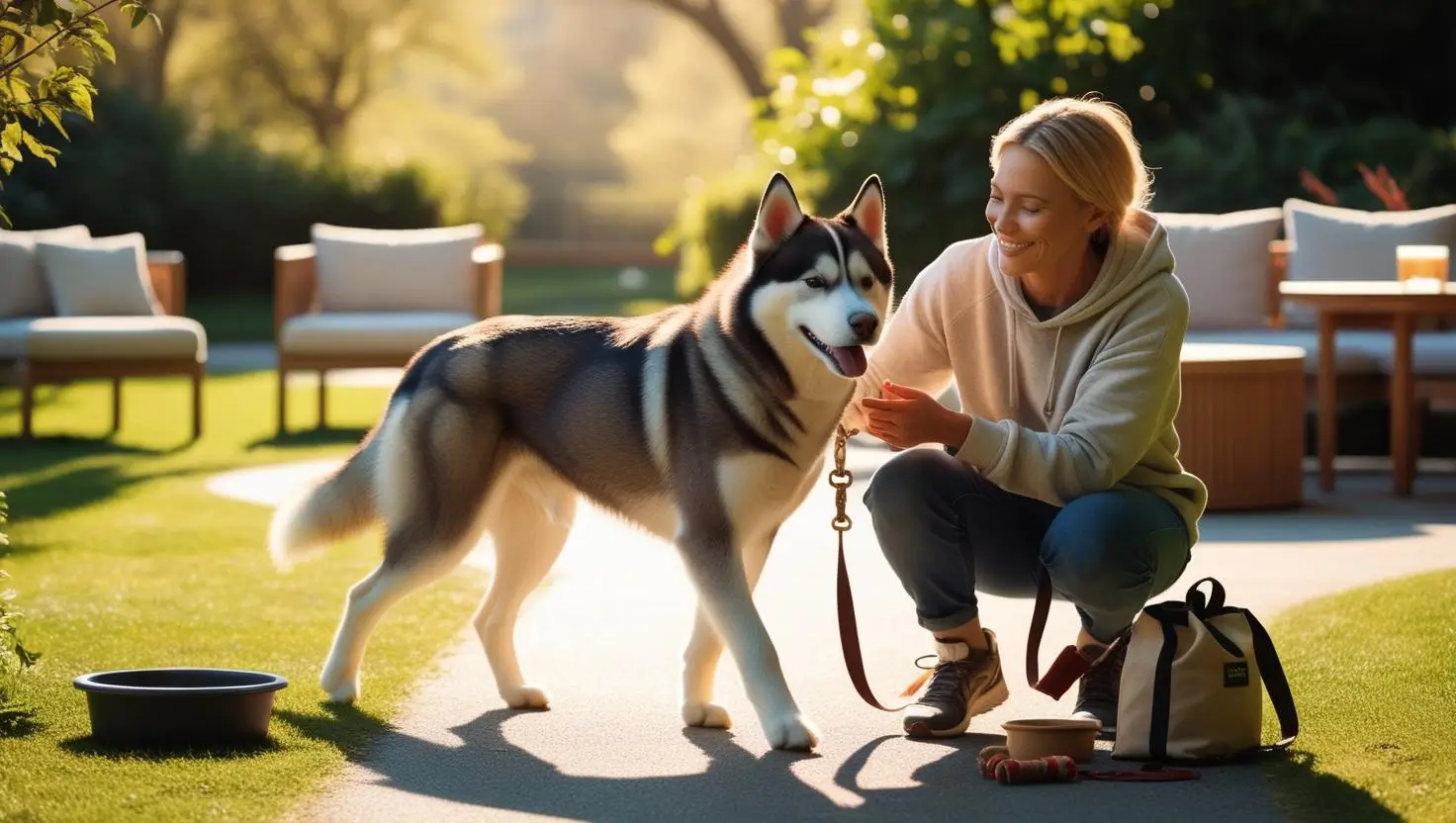Siberian Huskies are full of energy, curiosity, and independence. Without a structured daily routine, this energy can quickly turn into boredom, destructive behavior, and frustration. A good daily plan isn’t just about exercise—it’s about providing predictability, security, and mental balance.
In this article, you’ll learn how to create a daily routine that keeps your Husky happy, well-behaved, and emotionally stable.
Why a Routine Matters for Huskies
Huskies are intelligent and task-driven. They thrive when they know what to expect and when to expect it. A solid routine helps:
- Reduce anxiety and overexcitement
- Prevent boredom and destructive behaviors
- Improve obedience and focus during training
- Strengthen the bond between dog and owner
Without structure, Huskies may invent their own “jobs”—like digging holes in your yard or rearranging your couch cushions.
Elements of a Balanced Husky Routine
A good daily schedule covers physical exercise, mental stimulation, social interaction, and rest. Here’s what should be included:
1. Physical Exercise
Daily target: 1.5 to 2 hours total
Split across:
- Morning walk or jog (30–45 minutes)
- Afternoon play session (fetch, flirt pole, dog park)
- Evening stroll (20–30 minutes)
Exercise keeps your Husky’s body fit and mind clear.
2. Mental Stimulation
Daily target: 20–40 minutes
Ideas include:
- Training sessions (obedience, tricks, impulse control)
- Puzzle toys or treat-dispensing games
- Scent work (hide treats around the house or yard)
- Short problem-solving games
Mental fatigue is as important as physical exhaustion.
3. Social Interaction
Daily target: Several moments throughout the day
Huskies are social pack animals. Make time for:
- Gentle play with family members
- Playdates with other dogs (if safe and appropriate)
- Positive greetings with new people during walks
Loneliness can trigger anxiety in this breed.
4. Quiet Rest and Downtime
Daily target: Multiple sessions of quiet time
Huskies need peaceful moments to recharge. Encourage:
- Calm periods after meals or walks
- Access to a quiet resting area (bed, crate, or mat)
- Rewarding calm behavior with praise or treats
Overstimulation can lead to hyperactivity or irritability.
Sample Daily Routine for an Adult Husky
Here’s an example you can adjust to your own lifestyle:
| Time | Activity |
|---|---|
| 7:00 AM | Morning walk or jog (30–45 min) |
| 8:00 AM | Breakfast and calm downtime |
| 10:00 AM | Short training session (10 min) |
| 12:00 PM | Midday potty break and sniffing walk |
| 2:00 PM | Puzzle toy or scent game indoors |
| 4:00 PM | High-energy play session (fetch, tug) |
| 6:00 PM | Dinner and quiet chewing time (bone, Kong) |
| 8:00 PM | Evening walk or relaxed stroll (20–30 min) |
| 9:00 PM | Calm bonding time (petting, cuddling) |
| Overnight | Rest in a safe, cozy spot |
Consistency is the key. Even slight predictability helps your Husky feel grounded and secure.
Tips to Build and Maintain Your Husky’s Routine
- Stay consistent but flexible: Life happens. Minor schedule shifts are fine if you maintain the structure overall.
- Use positive reinforcement: Reward good behavior during activities.
- Watch for overstimulation signs: Excess barking, zoomies, or chewing may mean it’s time for a quiet break.
- Keep training sessions short and fun: Huskies lose focus easily if bored.
- Adjust routines as needed: Young puppies and seniors have different needs than adult Huskies.
What Happens Without a Routine?
Without structure, Huskies may:
- Develop separation anxiety
- Become destructive indoors
- Bark or howl excessively
- Escape or seek stimulation elsewhere
- Struggle with behavior training
Routine is your strongest tool for raising a balanced, content Husky.
How to Adapt Your Routine During Changes
Changes like moving, traveling, or a new work schedule can disrupt your Husky’s rhythm.
Tips for smooth transitions:
- Introduce changes gradually
- Maintain key elements (exercise, meals, rest times)
- Offer extra mental stimulation to offset stress
- Keep familiar toys, beds, or scents nearby
A few adjustments will help your Husky feel safe and adaptable.
Structure Leads to Freedom
It may seem counterintuitive, but a structured routine actually gives your Husky more freedom. When they know what’s expected and feel secure, they have more confidence to explore, play, and relax happily.
Consistency, patience, and love will turn your daily routine into the foundation of a peaceful and joyful life with your Husky.

